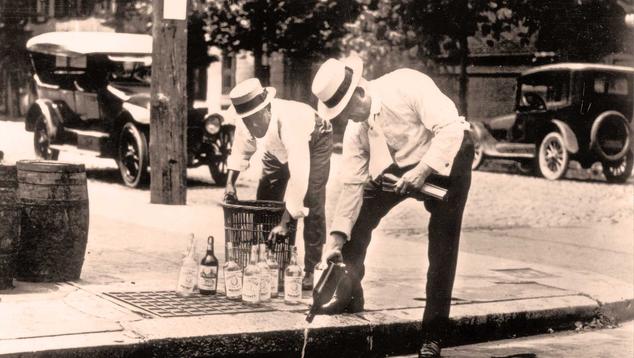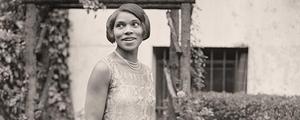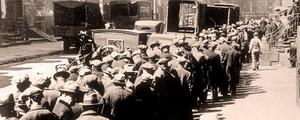WASHINGTON, D.C. -- On Oct. 28, 1919, Congress overrode President Woodrow Wilson's veto of the National Prohibition Act, commonly known as the Volstead Act after its legislative sponsor. This finally empowered the federal government to enforce Prohibition, which had gone into effect with the ratification of the 18th Amendment in January 1919, and had a massive impact on the U.S. economy, law enforcement and American culture for more than a decade.
The act set the stage for an iconic era of history when many Americans routinely disregarded federal law in their manufacturing, selling and transporting of alcoholic beverages. The "Roaring Twenties" are often viewed through the framing of the Volstead Act's passage and the stock market crash of 1929 serving as bookends that marked the beginning and end of a decade-long party. Illicit drinking was a pastime during Prohibition that gave rise to both nightlife subcultures and the American mafia.
Americans didn't exactly miss Prohibition in the early years after President Franklin D. Roosevelt ended it in 1933 -- a campaign promise he delivered on in his first year in office.
In 1935 -- Gallup's first year of polling -- Americans expressed mixed reviews on the effect of the Volstead Act's repeal. Roughly equal proportions of respondents said the drinking situation in their locality was "better," "worse" or "about the same" after repeal compared with the last few years of Prohibition.
| U.S. adults | |||||||||||||||||||||||||||||||||||||||||||||||||||||||||||||||||||||||||||||||||||||||||||||||||||
|---|---|---|---|---|---|---|---|---|---|---|---|---|---|---|---|---|---|---|---|---|---|---|---|---|---|---|---|---|---|---|---|---|---|---|---|---|---|---|---|---|---|---|---|---|---|---|---|---|---|---|---|---|---|---|---|---|---|---|---|---|---|---|---|---|---|---|---|---|---|---|---|---|---|---|---|---|---|---|---|---|---|---|---|---|---|---|---|---|---|---|---|---|---|---|---|---|---|---|---|
| % | |||||||||||||||||||||||||||||||||||||||||||||||||||||||||||||||||||||||||||||||||||||||||||||||||||
| Better | 36 | ||||||||||||||||||||||||||||||||||||||||||||||||||||||||||||||||||||||||||||||||||||||||||||||||||
| About the same | 31 | ||||||||||||||||||||||||||||||||||||||||||||||||||||||||||||||||||||||||||||||||||||||||||||||||||
| Worse | 33 | ||||||||||||||||||||||||||||||||||||||||||||||||||||||||||||||||||||||||||||||||||||||||||||||||||
| Gallup, Oct. 8-13, 1935 | |||||||||||||||||||||||||||||||||||||||||||||||||||||||||||||||||||||||||||||||||||||||||||||||||||
Two in Three Americans Rejected Making America Dry Again
In later years, Gallup asked the public if, given another opportunity, they would vote to "make the country dry" -- that is, to reinstate Prohibition. Consistently, about two in three Americans said they would vote to not restore Prohibition in polls from 1936 to 1942.

Asking the question another way -- whether they would vote to make the country "wet" or "dry" -- produced similar results. In 1945%, 61% said "wet" and 32% "dry."
Though only about a third actually wanted a return to Prohibition, Americans were slightly more likely to say that "young people would be better off" if Prohibition were put back into effect, ranging between 38% and 43% in polls from 1938 to 1939.
Most Americans Drank Alcohol After Prohibition
Six years after Prohibition's repeal via the 21st Amendment, a majority of Americans (58%) reported that they drank alcoholic beverages on occasion. This is on the low end of the 55% to 71% range Gallup has recorded in its 80-year trend since that first measure. Americans may have been less likely to drink in 1939 than they have reported on average in the decades since, but it's also possible that some people might have hesitated to admit to imbibing so soon after alcohol's relegalization. Additionally, many Americans struggling to make ends meet during the Great Depression couldn't afford to indulge in a recreational beverage.

Read more from the Gallup Vault.




